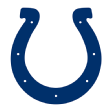Lost in the clamor of NFL free agency is that it's often best not to get involved in the first place. Think about the teams that have been regarded as offseason champs in years past. Washington. Miami. Tampa Bay. The reality is that teams don't want to be stuck spending in free agency, and more often than not, spending big money just creates new problems. Organizations know this, but in the desperate search for talent, they delude themselves into believing they can be the exception to the rule.
So far in 2016, a dozen NFL teams have mostly have sat out the free-agent spending period, choosing to focus on retaining their own players or watching them leave. In some cases, that was a conscious choice; in others, it was forced upon an unquestionably frustrated team by a stifling cap situation. Given all the attention focused on free agency's active participants, let's take a look at those 12 teams that have kept quiet, try to understand why they've been so reticent, and figure out whether they were wise to remain anonymous.
Going alphabetically, let's begin by starting with one of the worst cap situations in all of football ...

Buffalo Bills
Notable players in: none
Notable players out: Mario Williams, Leodis McKelvin, Chris Hogan, Nigel Bradham
Why: cap woes
Right idea: no choice
After spending heavily to bring in the likes of LeSean McCoy and Charles Clay last offseason, the Bills simply haven't had the cap space to work with this time around. They had to release Williams to free up the space required to retain their two most prominent free agents, offensive linemen Richie Incognito and Cordy Glenn, the latter of whom was franchised.
They've also had to restructure several deals, most notably Clay's, which has to be a candidate for the worst contract in all of football. The Bills will be on the hook for an average of $8 million in cap charges per year to Clay over the next three years with no way to get out of the deal barring a trade. Not great. To the best of my knowledge, they haven't signed a veteran free agent from another team at any level this offseason. That's great when you're the Packers, a team dedicated to building through the draft year after year. Not so much when you recently traded your first- and fourth-round picks away, as the Bills did in the Sammy Watkins trade.

Carolina Panthers
Notable players in: Paul Soliai
Notable players out: Jared Allen, Brad Nortman
Why: cap woes, organizational philosophy
Right idea: yes
Having won three consecutive NFC South titles without being able to invest heavily in free agency, you can understand why Panthers general manager Dave Gettleman might not be desperate to hop in now that he finally has some cash to work with. Carolina has $20 million in cap space, but the Panthers have stayed frugal during the free-agency period. They pulled off one of the best moves of the offseason by cutting Charles Johnson and re-signing him, saving $8.8 million in the process.
Given that Carolina came within one win of a Super Bowl title last year, it's reasonable enough to remain conservative in free agency. The Panthers were reportedly interested in Eric Weddle before he signed with the Ravens, and with Roman Harper a free agent, the Panthers could target a veteran safety to play alongside Kurt Coleman. Likewise, with Jerricho Cotchery a free agent, a veteran wideout who can go over the middle and help out as a blocker, such as Anquan Boldin, would make sense too. But these are the sorts of moves that smart teams make on April 15, not March 15.

Cincinnati Bengals
Notable players in: Taylor Mays
Notable players out: Mohamed Sanu, Marvin Jones, Andre Smith
Why: organizational philosophy
Right idea: not right now
The Bengals appear more averse to free agency than most teams in the NFL. The only player they've brought in from the outside this year is Taylor Mays, who previously spent several years with the team and profiles as a backup safety. Meanwhile, they've seen their No. 2 and No. 3 receivers both leave town, and while they re-signed critical safety George Iloka, veterans such as Leon Hall and Reggie Nelson are still in the free-agent pool.
Marvin Lewis & Co. deserve the benefit of the doubt; they'll draft and develop talent from within, and they've been successful the past few years in doing so. Given that they've lost so much talent this offseason, though, even if they weren't going to be shopping for Olivier Vernon, it seems as though they could have invested in a low-cost veteran or two, right? There have to be a few guys in the pool who have played for the Bengals before. Andre Caldwell! And, well, he might be the only one. Some veteran depth could shore up the bottom of the Cincinnati roster, but it is still a deep roster.

Cleveland Browns
Notable players in: Demario Davis, Rahim Moore
Notable players out: Alex Mack, Mitchell Schwartz, Travis Benjamin, Tashaun Gipson, Karlos Dansby, Dwayne Bowe, Johnny Manziel
Why: organizational philosophy?
Right idea: ... maybe?
This is a classic half-full/half-empty argument. Look at the argument one way and you see a 3-13 Browns team with precious little young talent losing four worthwhile contributors in free agency -- two of whom saw their negotiations end with public remarks from the Browns that they were no longer interested. Oh, and they haven't replaced any of them. Cleveland drafted Cam Erving as a possible fill-in for Alex Mack last year, but Erving was a mess in 2015, and there's no such argument for the three others. Given how disappointing the rest of the Cleveland roster is, there's even less of a reason to be hopeful about the 2016 Browns, even with new coach Hue Jackson.
Look at it from another perspective, though, and you can see an analytically inclined Browns organization thinking about the future. Really: How important can it be to lock up the young core of a 3-13 team? How much worse can the Browns really be without those guys or Dansby, whom they cut this week? By staying out of free agency, the Browns can ensure that they'll pick up compensatory picks for their departing starters; Cleveland is currently pegged to take home three fourth-rounders and a fifth-rounder. In a typical draft, per Chase Stuart's draft chart, that would be worth somewhere around a late-first-round or high-second-round pick. It's hardly a foolproof plan, but it's at least defensible.

Dallas Cowboys
Notable players in: Cedric Thornton
Notable players out: none
Why: cap woes, organizational philosophy
Right idea: yes
Under the influence of Stephen Jones, the Cowboys look like an entirely different organization. The team that routinely fouled up its cap to fit in an extra free agent and used first-round picks on big-name prospects is slowly beginning to look like a patient, intelligent franchise. It didn't work out last year, but when your star quarterback misses most of the season with an injury, neither of those philosophies will work.
This year, with about $11 million in cap space, the Cowboys have mostly sat out of the free-agent market, adding only a quality defensive lineman in Cedric Thornton while re-signing Morris Claiborne and Rolando McClain. They still need a pass-rusher if they don't re-sign Greg Hardy, but given Rod Marinelli's ability to manufacture useful pass-rushers seemingly out of thin air, it's a place the Cowboys would likely prefer to buy low and in bulk. In a draft deep on defensive linemen, it wouldn't be a surprise to see Dallas head in that direction next month too. The only surprise is that the Cowboys haven't cut Brandon Carr, instead choosing to restructure Tyron Smith's contract for the second consecutive year to create cap space. Some bad habits die slower than others.

Green Bay Packers
Notable players in: none
Notable players out: Casey Hayward
Why: organizational philosophy
Right idea: yes
They're the Packers, and they're good at this. General manager Ted Thompson has deserved the benefit of the doubt for years now, and given how deep the Packers perennially are, there isn't really much that would even qualify for their shopping list. Brandon Boykin could make sense as a buy-low slot cornerback with Hayward leaving for the Chargers. It would be nice to see them take a flier on a veteran inside linebacker chasing a title such as Dansby, with the hopes that he could help push Clay Matthews back outside more frequently. And a swing tackle would make some sense, with Don Barclay struggling last year before hitting free agency this offseason. These are minor concerns, though, for a team whose playoff path seems preordained.

Indianapolis Colts
Notable players in: none
Notable players out: Coby Fleener, Jerrell Freeman, Dwight Lowery
Why: don't know
Right idea: no
Is it possible that Colts general manager Ryan Grigson has learned from his mistakes? After four years of investing heavily in free agents, Grigson's 2015 haul proved to be a disastrous Pyrrhic victory. Andre Johnson, Trent Cole, Todd Herremans and Frank Gore performed far below their name value, and the Colts continued to struggle to protect Andrew Luck, who finally proved breakable and missed nine games. The Colts have $22 million in cap space, but you can understand why Grigson would be, well, four times bitten, once shy.
At the same time, this is really Grigson's last chance to use his cap space before Luck swallows it up for years to come. Luck's salary rose from $7.0 million to $16.2 million with the Colts obviously picking up his fifth-year option; his next contract will likely see those numbers rise even further, with a $22 million-per-year cap hit hardly out of the question. Ideally, given that Luck isn't going anywhere for a long time, the Colts would be giving Luck a large signing bonus and spreading it over the length of a five- or six-year deal to create cap space; at the very least, they should be using that extra $6 million or so in space to sign some help for Luck.

Los Angeles Rams
Notable players in: Quinton Coples, Coty Sensabaugh
Notable players out: Janoris Jenkins, Chris Long, Rodney McLeod, James Laurinaitis
Why: cap woes?
Right idea: no
Faced with most of their defense hitting free agency, the Rams had to pick and choose whom to keep. They ended up deciding on Trumaine Johnson over Jenkins, a defensible move, but their inability to come to terms with Johnson on a long-term deal forced them to franchise him at just under $14 million, limiting their options in free agency. They also locked up rotation players such as William Hayes and Eugene Sims, with the more curious move being the five-year, $45-million deal they gave to Mark Barron. And it's hard to imagine they were bidding against many teams for Sensabaugh, who got a three-year deal with $6.5 million guaranteed after failing to impress in Tennessee. Their pre-free-agency moves to cut Long, Laurinaitis and Jared Cook seemed to foretell an aggressive free-agency period, but the Rams ended up having a pretty tame couple of weeks on their way to Los Angeles. Given their needs along the offensive line, that's a disappointment.

Pittsburgh Steelers
Notable players in: Ladarius Green, Ryan Harris
Notable players out: Kelvin Beachum, Steve McClendon, Antwon Blake
Why: organizational philosophy, cap woes
Right idea: no choice
The Steelers are actually over the cap when you consider the salary needs for their draft pool, a problem that they'll need to alleviate over the next few weeks. Their cap woes continue to leave them threadbare in the secondary, and they couldn't do much about Beachum or McClendon leaving. The Green signing makes sense, as a replacement both for Heath Miller and the downfield ability of Martavis Bryant, who will likely be suspended for the entire 2016 season. Harris, typically stretched at right tackle, will have to compete with mammoth project Alejandro Villanueva for the starting job on the left side. And the Steelers remain basically without a viable option behind the oft-injured Ben Roethlisberger, given that the plausible free-agent options are guys like Jimmy Clausen and T.J. Yates. Even if Pittsburgh wanted to invest any further in free agency, it's simply not able to do so.

San Francisco 49ers
Notable players in: Zane Beadles
Notable players out: Alex Boone
Why: organizational philosophy
Right idea: no
GM Trent Baalke loves draft picks, but the only comp pick the 49ers are getting from their departing crop of talent is a fourth-rounder for Boone, so this isn't a compensatory-pick play like the one the Browns are pulling off. This is either Baalke struggling to find good values, players not wanting to suit up for Baalke and Chip Kelly, or a combination of the two. In any case, it's crippling the 49ers, who have a roster decimated by unexpected retirements and nearly $60 million in cap space.
They haven't brought Robert Griffin in for an interview or brought in a pass-rusher to help Aaron Lynch or some depth at cornerback, where the depth chart is barren. The rebuild of the 49ers was supposed to use much of that 2016 cap space to turn things around. The good news is that it'll still be there in 2017, even if Baalke is not.

Seattle Seahawks
Notable players in: Sealver Siliga
Notable players out: Russell Okung, Brandon Mebane, J.R. Sweezy, Bruce Irvin
Why: organizational philosophy
Right idea: probably
GM John Schneider is unquestionably a Ted Thompson disciple, but he has been far likelier to deal away his first-round pick, having dealt away his first-rounder in each of the past three drafts. He appears to be holding on to the selection barring a rumored trade for somebody like Joe Thomas, who would give the Seahawks an anchor on an otherwise highly questionable offensive line. Seattle needs to figure out what to do with its offensive line, which is in shambles after years of allowing free agents to leave.

Washington
Notable players in: David Bruton, Kendall Reyes
Notable players out: Keenan Robinson, Robert Griffin III, Jason Hatcher, Dashon Goldson
Why: organizational philosophy
Right idea: yes
If the Cowboys' being lauded for their financial patience is one thing, Washington (of all teams) should be applauded for doing the same thing. The famously aggressive Daniel Snyder-era teams tried to win in March, but with Scot McCloughan now the point man for football, it seems Snyder has been convinced that slow and steady might win a playoff game sometime soon. To that end, McCloughan has continued to upgrade the team's special teams by adding the useful Bruton and added depth up front with Reyes. None of the moves seems surprising on its own, and they combine well with a conservative, draft-driven approach. With McCloughan at the helm and no draft-pick trades on the way, that seems like a positive approach for Washington.
